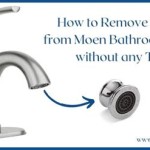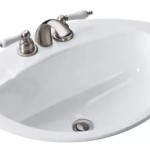How To Repair Broken Bathroom Tile: A Comprehensive Guide
Broken bathroom tile can be unsightly and, if left unrepaired, can lead to further damage, such as water seepage and mold growth. Replacing a broken tile is a manageable DIY project for homeowners with basic skills and the right tools. This article provides a detailed, step-by-step guide on how to repair broken bathroom tile effectively, ensuring a professional-looking result and preventing future problems. The process involves removing the damaged tile, preparing the surface, applying new adhesive, placing the new tile, and grouting.
Identifying the Damage and Gathering Supplies
Before commencing the repair, a thorough assessment of the damage is necessary. Determine the extent of the fracture and whether surrounding tiles are also compromised. Hairline cracks might sometimes be repaired with epoxy, but significant breaks or chips usually necessitate replacement. Identifying the type of tile, its size, and its color is crucial for finding a suitable replacement. If original tiles are unavailable, selecting a close match is the next best option.
Once the assessment is complete, gather the necessary tools and materials. Essential tools include a utility knife or grout removal tool, a hammer, a chisel or flat-head screwdriver, safety glasses, gloves, a shop vacuum, a notched adhesive trowel, a sponge, a bucket, tile adhesive (thin-set mortar), tile grout, and a grout float. Having all these items readily available will streamline the repair process and minimize interruptions.
Safety is paramount. Always wear safety glasses to protect your eyes from flying debris, and gloves to protect your hands from sharp edges and chemicals. Ensure adequate ventilation in the bathroom during the repair process.
Removing the Damaged Tile
The first step in the repair process is to carefully remove the broken tile without damaging the surrounding tiles. This requires patience and precision.
Begin by removing the grout around the damaged tile using a utility knife, grout saw, or grout removal tool. Apply steady pressure and work along the grout lines to loosen the surrounding grout. Be careful not to scratch or chip the adjacent tiles during this process. A power grout removal tool can expedite this task, but exercise caution to avoid damaging surrounding tiles.
Once the grout is removed, position a chisel or flat-head screwdriver at the edge of the broken tile, angled slightly inward toward the tile’s center. Gently tap the chisel with a hammer, applying gradual pressure to break the tile into smaller pieces. This method helps to prevent damage to the underlying substrate.
Continue chipping away at the tile until all the pieces are removed. Larger fragments may require more forceful tapping, but maintain control to avoid collateral damage. If the tile is particularly stubborn, a multi-tool with a grout removal attachment can be used cautiously.
After removing the tile fragments, thoroughly clean the area with a shop vacuum to remove any remaining debris, dust, and loose grout. This ensures proper adhesion of the new tile. Inspect the substrate beneath the tile for any damage. If the substrate is cracked or uneven, it needs to be repaired before applying the new tile.
Preparing the Surface and Installing the New Tile
Preparing the surface correctly is vital for the successful installation of the new tile. A clean, level surface ensures proper adhesion and a professional finish.
Inspect the exposed substrate for any remaining adhesive. Use a scraper or chisel to remove any old thin-set mortar or other adhesive residue. Ensure the surface is as clean and smooth as possible. If the substrate is damaged or uneven, apply a thin layer of patching compound to create a level surface. Allow the patching compound to dry completely according to the manufacturer's instructions.
Before applying the new adhesive, dry-fit the replacement tile to ensure it fits properly in the space. If the tile is slightly too large, it can be trimmed using a tile cutter or wet saw. Measure and mark the excess material to be removed, then carefully cut the tile to size. Remember to wear safety glasses during this process.
Apply a thin, even layer of tile adhesive (thin-set mortar) to the substrate using a notched trowel. The size of the notch on the trowel will depend on the size of the tile and the manufacturer’s recommendations. Hold the trowel at a 45-degree angle and create ridges in the adhesive. This ensures even distribution and proper bonding.
Carefully position the replacement tile onto the adhesive, pressing it firmly into place. Use a slight twisting motion to ensure good contact between the tile and the adhesive. Align the new tile with the surrounding tiles, ensuring the grout lines are consistent.
Use tile spacers to maintain consistent grout lines between the new tile and the adjacent tiles. This creates a uniform and aesthetically pleasing look. Clean any excess adhesive that squeezes out from the grout lines with a damp sponge.
Allow the adhesive to dry completely according to the manufacturer's instructions. This usually takes at least 24-48 hours. Avoid walking on or disturbing the new tile during this drying period.
Grouting and Final Touches
Grouting is the final step in the tile repair process. Proper grouting seals the gaps between the tiles, preventing water intrusion and providing a finished look.
Once the adhesive is completely dry, remove the tile spacers. Prepare the grout according to the manufacturer’s instructions. Mix the grout with water in a bucket until it reaches a smooth, paste-like consistency. Avoid adding too much water, as this can weaken the grout.
Apply the grout to the grout lines using a grout float. Hold the float at a 45-degree angle and work the grout into the grout lines, ensuring they are completely filled. Apply firm pressure to force the grout into all the crevices.
Remove excess grout from the tile surface using the grout float, holding it at a 90-degree angle. Scrape the float diagonally across the tiles to remove the bulk of the excess grout.
After removing the excess grout, allow it to set for the time recommended by the manufacturer, typically 15-30 minutes. Then, use a damp sponge to clean the tile surface. Rinse the sponge frequently in clean water to prevent smearing the grout.
Wipe the tiles with a clean, dry cloth to remove any remaining grout residue. Multiple passes with the sponge and cloth may be necessary to achieve a clean, polished finish.
After the grout has fully cured, apply a grout sealer to protect the grout from stains and water damage. Follow the manufacturer's instructions for applying the sealer. This will help maintain the appearance of the grout and prevent future problems.
Inspect the repaired area for any imperfections. If there are any gaps or voids in the grout lines, apply additional grout to fill them. Allow the grout to dry and then clean the surface again.
The final step is to carefully inspect the repaired tile and ensure it is level with the surrounding tiles. Check that the grout lines are consistent and that the surface is clean and free of debris. A well-executed tile repair will seamlessly blend with the existing tiles, creating a professional and durable result.

How To Repair Ed Tiles Remove And Replace

Why Ed Tiles In Your Bathroom Are A Problem Shower Sealed

Solved How To Repair Ed Chipped Tiles Surface Masters

How To Replace Ed And Broken Shower Tiles

Is Ed Grout A Problem Repair Easy The Medic

How To Repair Ed Tiles Remove And Replace

How To Fix Ed Tile From Hairline Fractures Major Fissures
How To Fix Replace Ed Bathroom Tiles

How Do I Repair Tile In A Shower Ceramic
.png?strip=all)
How To Fix Loose Or Broken Ceramic Floor Tiles
Related Posts







